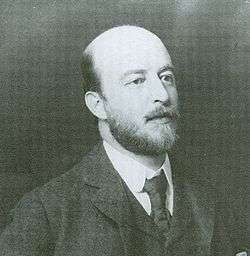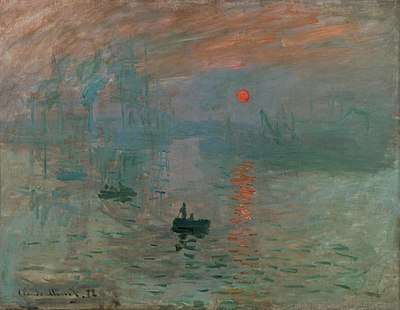James Wilson Morrice
James Wilson Morrice RCA (August 10, 1865 – January 23, 1924) was a significant Canadian landscape painter. He studied at the Académie Julian[1] in Paris, France, where he lived for most of his career. James Morrice Street in New Bordeaux, Ahuntsic-Cartierville, Montreal is named in his memory.
James Wilson Morrice | |
|---|---|
 | |
| Born | August 10, 1865 Montreal, Quebec, Canada |
| Died | January 23, 1924 (aged 58) |
| Nationality | Canadian |
| Education | Académie Julian |
| Known for | Painting |
Notable work | Prow of a Gondola, Venice |
| Movement | Post Impressionism |
Biography
Morrice was born in Montreal, Quebec, the son of a wealthy merchant, and studied law in Toronto from 1882 to 1889. In 1890 he left to study painting in England. The next year he arrived in Paris, where he studied at the Académie Julian from 1892 to 18977. At the Académie Julian, he befriended Charles Conder and Maurice Prendergast, and also met Robert Henri.
Morrice continued to live in Paris until the First World War, although he spent most of his winters in Canada. He made many connections in the intellectual circles of Paris, while also remaining in touch with the Canadian art world:
- joined the Salon d'Automne, 1905
- joined the Canadian Art Club, 1907
- elected member of the Royal Canadian Academy, 1913
During this period he was also in contact with the literary milieu, with English expatriate intellectuals living in Paris, such as W. Somerset Maugham, Arnold Bennett, and Clive Bell. In the winter of 1911-12 he shared a studio with Matisse in Tangiers.
With the advent of World War I, Morrice fled to Montreal, and then to Cuba. There he began to succumb to alcoholism. The output of his last period is uneven and infrequent. In the summer of 1922 he travelled to Algiers, where he painted with Albert Marquet. This would be the last time that he painted, as his health began to rapidly deteriorate. He died, aged 58, in Tunis.
Gallery
Morrice's paintings before the turn of the century are thinly painted and inspired by Whistler, both in sentiment and in treatment of colour. Just prior to World War I he began to paint, in a thicker style, winter Canadian scenes influenced by the Impressionists. Some of his works during his Caribbean period are considered his best and are painted in a loose style influenced by Post Impressionism.
- Prow of a Gondola, Venice, 1897 National Gallery of Canada
- Return from School, 1901
- Quai des Grands-Augustins, 1903. The National Gallery of Canada
- The Ferry, Quebec, 1906. NGC
- Blanche Baume, 1912. NGC
- House in Santiago, 1915 Tate Gallery
- Village Street, West Indies, 1919. Montreal Museum of Fine Arts
 Paris Canal 1900 Musée d'art contemporain de Montréal
Paris Canal 1900 Musée d'art contemporain de Montréal Venice c. 1900
Venice c. 1900 Dieppe, 1906
Dieppe, 1906 Street Scene Pink Sky Paris c. 1908 Art Gallery of Ontario
Street Scene Pink Sky Paris c. 1908 Art Gallery of Ontario Old Holton House, Montreal, 1908-09 Musée des beaux-arts de Montréal
Old Holton House, Montreal, 1908-09 Musée des beaux-arts de Montréal Venice, c. 1910
Venice, c. 1910 The Ferry, Quebec c. 1910
The Ferry, Quebec c. 1910 Blanche Baume, Oil on canvas, 1911–12, National Gallery of Canada
Blanche Baume, Oil on canvas, 1911–12, National Gallery of Canada
Recognition
In 1958, works by Morrice along with those of Jacques de Tonnancour, Anne Kahane and Jack Nichols represented Canada at the Venice Biennale.[2]
References
- biographi.ca
- "Past Canadian Exhibitions". National Gallery of Canada at the Venice Biennale. National Gallery of Canada. Archived from the original on October 13, 2013. Retrieved October 12, 2013.
Further reading
- Reid, Dennis (1988). A Concise History of Canadian Painting, Second Edition. Don Mills: Oxford University Press Canada. ISBN 0-19-540663-X.
- Ash K. Prakash ed.: Impressionism in Canada. A Journey of Rediscovery. Pref. Guy Wildenstein, introd. William H Gerdts. Arnoldsche Verlagsanstalt, Stuttgart 2014, 2. Aufl. 2015 (illustr. book, with expl. One chapter on Wilson Morrice. Figure Sainte-Anne-de-Beaupré from 1897 on the publishers page)
